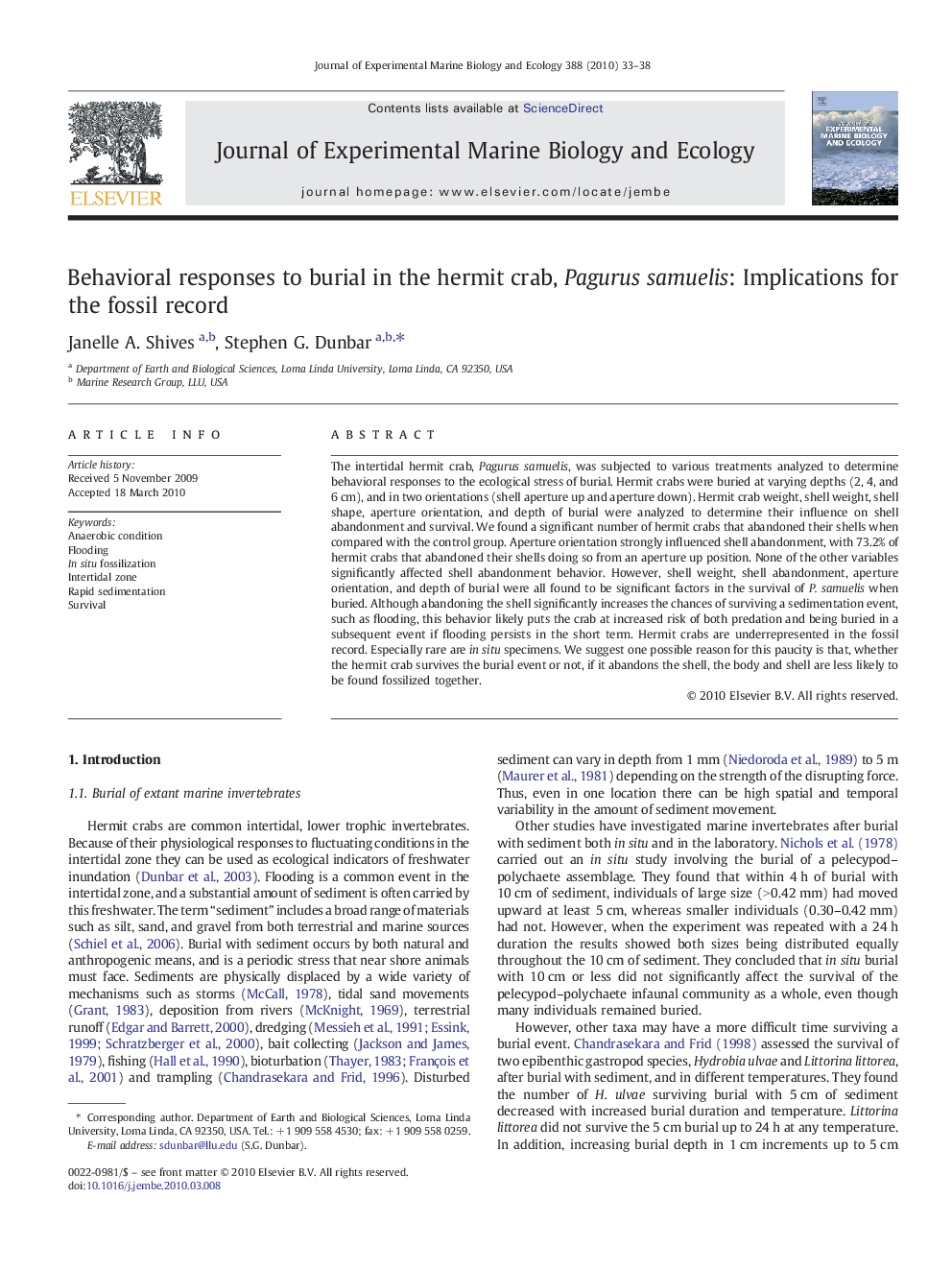| Article ID | Journal | Published Year | Pages | File Type |
|---|---|---|---|---|
| 4396716 | Journal of Experimental Marine Biology and Ecology | 2010 | 6 Pages |
The intertidal hermit crab, Pagurus samuelis, was subjected to various treatments analyzed to determine behavioral responses to the ecological stress of burial. Hermit crabs were buried at varying depths (2, 4, and 6 cm), and in two orientations (shell aperture up and aperture down). Hermit crab weight, shell weight, shell shape, aperture orientation, and depth of burial were analyzed to determine their influence on shell abandonment and survival. We found a significant number of hermit crabs that abandoned their shells when compared with the control group. Aperture orientation strongly influenced shell abandonment, with 73.2% of hermit crabs that abandoned their shells doing so from an aperture up position. None of the other variables significantly affected shell abandonment behavior. However, shell weight, shell abandonment, aperture orientation, and depth of burial were all found to be significant factors in the survival of P. samuelis when buried. Although abandoning the shell significantly increases the chances of surviving a sedimentation event, such as flooding, this behavior likely puts the crab at increased risk of both predation and being buried in a subsequent event if flooding persists in the short term. Hermit crabs are underrepresented in the fossil record. Especially rare are in situ specimens. We suggest one possible reason for this paucity is that, whether the hermit crab survives the burial event or not, if it abandons the shell, the body and shell are less likely to be found fossilized together.
